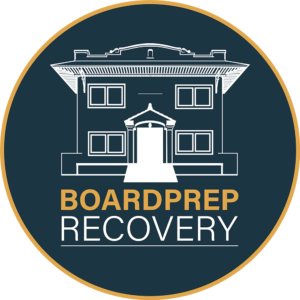When looking at the rate of substance use disorder among specific physician careers, anesthesiology is one of the most affected medicine specialties. On the surface, one could readily say this is due to the regularity with which they’re overworked and have easier access to addictive drugs. But anesthesiologists face other challenges, as well.
Since the lifetime prevalence of substance abuse disorder in physicians is similar to the general population (approximately 10% to 14%)[1], as many as 120,000 physicians and 7,000 anesthesiologists may be affected by a substance use disorder during their lifetime. And if statistics such as these are even remotely accurate, it represents an important public health issue, given the risks of being cared for by an impaired physician or anesthesiologist.
According to the American Society of Anesthesiologists Task Force on Chemical Dependence,[2] the following are some of the characteristics of addicted anesthesiologists:
- 50% are younger than 35 years old
- 76-90% abuse opioids as their drug of choice
- 33-50% are polydrug abusers
- 33% have a family history of addictive disease
- 65% are associated with academic departments
- Residents are overrepresented
Besides the above, the findings from a 2014 study on substance use disorder among anesthesiologists by Gabriel Schonwald, M.D., et al are worthy of noting.
“There are several unique features of substance abuse disorders in anesthesiologists. First, no other specialty has easier access to the equipment (needles, syringes) than anesthesiologists. Second, no other specialty has greater proficiency at venous cannulation. Third, no other specialty has easier access to commonly abused IV drugs, including potent IV opioids. Last, no other specialty is as skilled at precisely controlling the effects of IV opioids and other abusable drugs.”[3]
A unique risk exists, then, for drug abuse and addiction among anesthesiologists, especially when compounded by psychological, social and job-related stressors.
Fortunately, the problem of substance use disorders among physicians has been addressed, in part, by the creation of physician health programs (PHPs) to treat physicians afflicted with a substance use disorder. Indeed, anesthesiologists in rigorous PHPs have demonstrated consistently good outcomes, similar to other specialties in terms of survival, abstinence, completion of monitoring, return to work in their specialty and less likely to fail a drug test during monitoring.[4]
And according to the study by Schonwald, et al, “these favorable outcomes for anesthesiologists may be due to additional features in treatment and monitoring not used for other physicians, including witnessed naltrexone administration (or more recently the advent of sustained release parenteral naltrexone), regular hair drug testing, and increased technological surveillance in the operating room suite.”[5]
By signing a contract with a PHP and successfully completing residential care in a physician-oriented treatment program, an anesthesiologist with a substance use disorder can recover from their chemical dependency and, based on their evaluation by a professional addictionologist, keep their licensure and resume their career. If one is given the go-ahead to return to work as an anesthesiologist, the PHP will continue to provide follow-up outpatient monitoring, drug testing, counseling and group therapy, as well as recommend attendance in a 12-step–based support group such as Narcotics Anonymous.
As the American Society of Addiction Medicine has defined addiction as “a treatable, chronic medical disease involving complex interactions among brain circuits, genetics, the environment, and an individual’s life experiences” and indicated—on the basis of many years of scientific research—“prevention efforts and treatment approaches are generally as successful as those for other chronic diseases,”[6] any anesthesiologist struggling with a substance use disorder (aka addiction) would be wise to maintain hope for recovery, and simply reach out for help at a physician-oriented addiction treatment facility.
[1] Hughes PH, Brandenburg N, Baldwin DC Jr, Storr CL, Williams KM, Anthony JC, Sheehan DV. Prevalence of substance use among US physicians. JAMA. 1992;267:2333–9
[2] https://www.uthscsa.edu/academics/medicine/education/gme “Model Curriculum on Drug Abuse and Addiction for Residents in Anesthesiology”
[4] Ibid.
[5] Ibid.
[6] https://www.asam.org/for-the-public/definition-of-addiction







